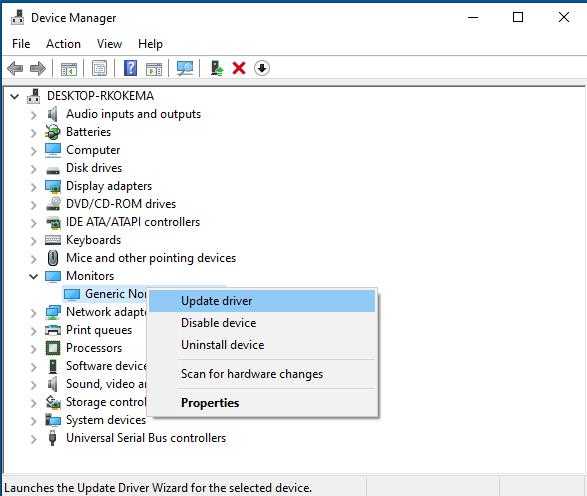Ultrawide monitors aren’t necessarily bad for your eyes if used properly, but they can cause eye strain if you don’t take precautions. The key is maintaining good viewing habits and positioning to prevent discomfort. While these expansive screens offer more workspace and immersive experiences, overexposure or poor ergonomics might lead to fatigue or headaches. So, are ultrawide monitors harmful? Not inherently, but they require mindful use to avoid causing eye issues. With the right setup and breaks, you can enjoy the benefits without risking your vision.
Ultrawide monitors can be used safely with proper ergonomics and regular breaks. They don’t automatically damage your eyes but can contribute to strain if you’re not careful. Being aware of how to set up and use them properly ensures a comfortable, eye-friendly experience.
Opting for an ultrawide monitor can be an excellent upgrade for productivity and entertainment, but many wonder if they pose risks to eye health. Since these screens are larger and more immersive, it’s natural to worry about potential strain or damage. The truth is, they aren’t inherently harmful, but improper use—such as sitting too close, not adjusting brightness, or ignoring breaks—can lead to eye discomfort. Factors like screen flicker, blue light emission, and prolonged focus can contribute to eye fatigue. To keep your eyes healthy, it’s crucial to follow ergonomic guidelines, take regular visual breaks, and adjust settings to reduce strain. By doing so, you can enjoy the benefits of ultrawide monitors without compromising your eye health.
Are Ultrawide Monitors Bad for Your Eyes?
Understanding Ultrawide Monitors and Their Popularity
Ultrawide monitors are large, wide screens that provide a broader view compared to traditional monitors. They are popular among gamers, designers, and professionals who need more screen space. This extra size helps improve productivity and makes multitasking easier. But, many people wonder if using these wide screens can hurt their eyes over time.
How Do Ultrawide Monitors Affect Eye Comfort?
The size and shape of ultrawide monitors can influence how comfortable they are for your eyes. Due to their width, you might need to move your head more to see all parts of the screen. This extra movement can cause eye strain or fatigue, especially if you’re working for long hours.
Field of View and Visual Comfort
A bigger screen means you can see more content without turning your head. However, if the monitor is too large or placed too close, it may increase eye strain because your eyes have to focus and refocus constantly. Proper positioning and size are key factors in reducing discomfort.
Distance Between Your Eyes and the Screen
For optimal comfort, your eyes should be about an arm’s length away from the monitor. If the ultrawide monitor is larger than this, you may need to stretch your eyes or move your head more, which can cause fatigue. Adjusting the monitor’s position can help solve this issue.
Eye Strain and Digital Eye Fatigue (Computer Vision Syndrome)
Using any screen for extended periods can lead to digital eye strain, also known as Computer Vision Syndrome. Symptoms include dry eyes, blurred vision, headaches, and discomfort. Ultrawide monitors can contribute to this if not used correctly.
How Ultrawide Monitors Contribute to Eye Strain
Because ultrawide monitors often have very high resolutions, they display sharp images. But if the brightness or contrast isn’t set properly, it can cause your eyes to work harder. Moving your eyes across a large, bright screen may also make your eyes more tired faster.
Signs That Your Eyes Are Overworking
Look out for symptoms like:
- Dry or watery eyes
- Blurred vision after using the monitor
- Headaches or neck pain
- Feeling tired or irritated eyes
If you notice these, it’s important to take breaks and adjust your workspace.
Are Ultrawide Monitors Better or Worse for Eye Health?
There is no simple answer—ultrawide monitors can be good or bad depending on how you use them. Proper setup, good habits, and the right monitor size can make a big difference.
Advantages of Ultrawide Monitors
- Increased productivity with more screen space
- Less need to switch between multiple windows
- Immersive experience for gaming and entertainment
These benefits often outweigh potential negatives when used correctly.
Potential Downsides for Eye Health
- Difficulty maintaining proper distance
- Extra head movement causing discomfort
- High brightness or glare can cause eye fatigue
Being aware of these issues helps you set up your workspace better.
Tips to Reduce Eye Strain on Ultrawide Monitors
You can take simple steps to protect your eyes and enjoy your ultrawide monitor comfortably.
Adjust Brightness and Contrast
Make sure your monitor’s brightness matches the ambient lighting in your room. Too bright or too dark screens can strain your eyes quickly.
Use Proper Lighting in Your Room
Avoid glare from windows or other light sources. Soft, evenly distributed lighting reduces strain and improves visibility.
Take Regular Breaks
Follow the 20-20-20 rule: Every 20 minutes, look at something 20 feet away for at least 20 seconds. This relaxes your eye muscles and prevents fatigue.
Position Your Monitor Correctly
Place your ultrawide monitor directly in front of you with the top of the screen at eye level. Keep the monitor at an arm’s length distance to minimize the need for excessive eye movement.
Consider Blue Light Filters and Anti-Glare Coatings
Blue light can cause eye strain and interfere with sleep. Using blue light filters or glasses, along with anti-glare screens, can help protect your eyes.
Choosing the Right Ultrawide Monitor for Your Eye Health
Not all ultrawide monitors are the same; selecting the right one can reduce potential eye problems.
Focus on Resolution and Refresh Rate
Higher resolution monitors provide clearer images, which are easier on your eyes. A refresh rate of 75Hz or higher also reduces flickering that can cause eye fatigue.
Size Matters
Choose a size that comfortably fits your workspace and viewing distance. A too-large monitor may increase strain, while a smaller one might not give enough viewing space.
Ergonomics and Adjustable Features
Look for monitors with adjustable height, tilt, and swivel features. Good ergonomics support better posture and reduce eye and neck discomfort.
Additional Considerations
Beyond monitor choice, other factors influence eye health when working on ultrawide screens.
Work Environment and Desk Setup
Ensure your workspace has proper lighting and your monitor is positioned correctly. Avoid working in dimly lit rooms or with bright backgrounds.
Eye Care Routine
Stay hydrated, blink often, and consider using artificial tears if your eyes feel dry. Regular eye checkups can catch issues early and prevent long-term damage.
Related Topics
- Blue light and its effect on sleep and eyes
- Ergonomic workspace setup tips
- Best monitor settings for eye comfort
- Comparison of ultrawide versus dual monitors
Maintaining eye health with ultrawide monitors is about awareness and good habits. With proper setup and regular breaks, you can enjoy the benefits of these large screens without risking your vision.
Frequently Asked Questions
Can prolonged use of ultrawide monitors cause eye strain?
Yes, extended use of ultrawide monitors can lead to eye strain if you don’t take proper precautions. The large screen size and extended field of view require your eyes to constantly adjust focus and gaze, which can cause fatigue. To reduce this, take regular breaks, follow the 20-20-20 rule—look at something 20 feet away for 20 seconds—and ensure your workspace lighting minimizes glare and reflections.
What are some healthy habits when using ultrawide screens to protect eye health?
Practicing good habits helps prevent discomfort while using ultrawide monitors. Keep the monitor at arm’s length and position the top of the screen at or slightly below eye level. Adjust the brightness and contrast to comfortable levels, and consider using blue light filters or glasses. Additionally, blink frequently to keep your eyes moist and avoid staring at the screen for long uninterrupted periods.
How does monitor resolution and refresh rate impact eye comfort?
A higher resolution provides sharper images, reducing the need for your eyes to strain to interpret blurry details. Similarly, a higher refresh rate minimizes flickering, which can cause eye fatigue and headaches over time. Choosing a monitor with these features can make extended use more comfortable and less taxing on your eyes.
Is the curvature of ultrawide monitors beneficial or harmful for eye health?
Curved ultrawide monitors can be advantageous because they help create a more immersive viewing experience and reduce distortion at the edges. This curvature aligns with the natural shape of your eyes, which can decrease eye strain and improve focus across the entire screen. However, improper positioning still can lead to discomfort, so adjust your setup to suit your viewing angle.
Are there specific screen settings recommended for ultrawide monitors to minimize eye fatigue?
Yes, customizing your monitor’s settings can make a significant difference. Lower the brightness to match ambient lighting, and adjust color temperature toward warmer tones to reduce blue light exposure. Enable any built-in eye comfort modes or blue light filters, and set a suitable refresh rate if adjustable. These adjustments help decrease eye strain during prolonged use.
Final Thoughts
Ultrawide monitors can enhance productivity and provide immersive viewing experiences. However, some users worry about eye strain due to their size and curvature.
While they aren’t inherently bad for your eyes, prolonged use without breaks may cause discomfort. Adjusting brightness, contrast, and distance helps minimize risks.
In conclusion, are ultrawide monitors bad for your eyes? Not necessarily. Proper usage and breaks make them a comfortable option for many users.
I’m passionate about hardware, especially laptops, monitors, and home office gear. I share reviews and practical advice to help readers choose the right devices and get the best performance.




